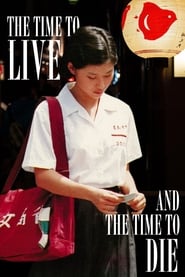Like the best of minimalist painting, sculpture, and music, [Hou Hsiao-hsien's] choices challenge audiences to consider their relation to the art, to acknowledge their own distance from the object before earning intimacy. Yet his projects aren’t theoretically motivated. His films aren’t objects made simply for their effect. They are motivated by where the personal meets the universal, themes of memory, presence, love and loss, themes that the art of film is uniquely adept at expressing.[…]
Sound is largely dubbed, giving heard dialogue the quality of conjecture.
[…]
What at first frustrates the viewer—that characters, faces, and motivations are hard to discern—gradually takes on depth of narrative meaning. The father, always viewed from far-off and rarely sharing a frame with his children, is actually gravely ill. Not wanting to infect his children, he deliberately keeps his distance.
[…]
Throughout the film, it’s the grandmother who reminds the family of their dislocation. Her senile habit of wandering far from home, only to be returned by rickshaw drivers insistent on proper payment, is a running joke but also the expression of sentiments sublimated by the others.
— Eric Hynes (Reverse Shot)

